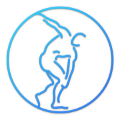The elbow plays an important role in the everyday function of the body. As a complex joint, the elbow is used for the extension and flexing of the forearm as well as the rotation of the hand and forearm. While the majority of instances involving elbow pain are not serious, they can certainly be painful and affect a wide variety of day-to-day living. When the tendons of the elbow are injured and thus inflamed, tendonitis may occur which is the most common type of elbow pain. Tendons are the soft tissues that connect muscle to bone and are essential to elbow movements.
Athletes who are heavily involved in tennis or golf are the most susceptible to elbow pain. In tennis players, overuse may cause injury to the tendons on outside of the elbow. In golfers, however, overuse may cause injury to the tendons on the inside of the elbow. These injuries are commonly referred to as tennis elbow and golf elbow, respectively, and medically referred to as medial epicondylitis and lateral epicondylitis. These are certainly the most frequently treated types of elbow pain. Additional causes of elbow pain include but are not limited to:
- Tendinitis
- Bursitis
- Arthritis
- Elbow Strain
- Elbow Infection
Treatment for elbow pain varies significantly dependent upon the severity of the injury. In the most minor cases the injury may be treated with simple pain medicine. In more severe cases, however, surgery may be required. More often than not, physical therapy is the best way to treat elbow pain to return the injured to normal function. At Campbell Sports Rehab and Spine Center, our physical therapy department has vast experience in handling elbow pain of all kinds. Schedule an appointment today to speak with one of our expert sport injury therapists.
Golfer’s Elbow (Medial Epicondylitis)
Golfer’s elbow is pain felt in the inner side of the elbow and may spread to the forearm and wrist. When the tendons of the forearm muscles attaching to the bony bump located in the inside of the elbow are injured, medial epicondylitis may ensue. It is important to note that while golfer’s elbow is the common title given to this injury, it is certainly not limited to golfers. Any athlete or person who uses their wrists repeatedly or clenches their fingers repeatedly is vulnerable to this injury.
When these elbow muscles and tendons are damaged, it may become increasingly difficult to perform the most common of daily activities. Some of the most common causes of golfer’s elbow are as follows:
- Golf
- Improper throwing or lifting
- Weight training
- Racket sports
Even something as simple as using a computer repeatedly over a long period of time may cause golfer’s elbow. While rest and ice are typically sufficient in treating minor injuries, physical therapy is often recommended to target the source of the pain and alleviate symptoms in the most efficient manner possible.
Tennis Elbow (Lateral Epicondylitis)
Tennis elbow is an overuse injury that can cause serious pain to sufferers. When the tendons that join the forearm muscles on the elbows outside region are inflamed it is likely that tennis elbow is occurring. Most commonly an overuse injury, tennis elbow can cause great discomfort and pain. In addition to overuse, a direct blow to the elbow may cause lateral epicondylitis. Some of the most common causes of tennis elbow include:
- Tennis
- Lifting
- Gripping
- Squash
- Racquetball
- Fencing
- Weight Lifting
A combination of rest, ice, and some type of elbow strap are initially used to treat the damages associated with tennis elbow. However, in more extreme cases in may be necessary to rehabilitate the elbow with stretches and strengthening exercises. Physical therapy is an excellent way to reduce inflammation and help build up the muscles around the elbow to return the injured party back to normal use.
Campbell Sports Rehab and Spine Center has treated patients for both golfer’s elbow and tennis elbow for many, many years. During this time, we have come to understand how critical a personalized treatment plan is for each individual patient. As our chiropractic and physical therapy team diagnosis the injury, we create a specific plan of treatment that meets your particular needs.
